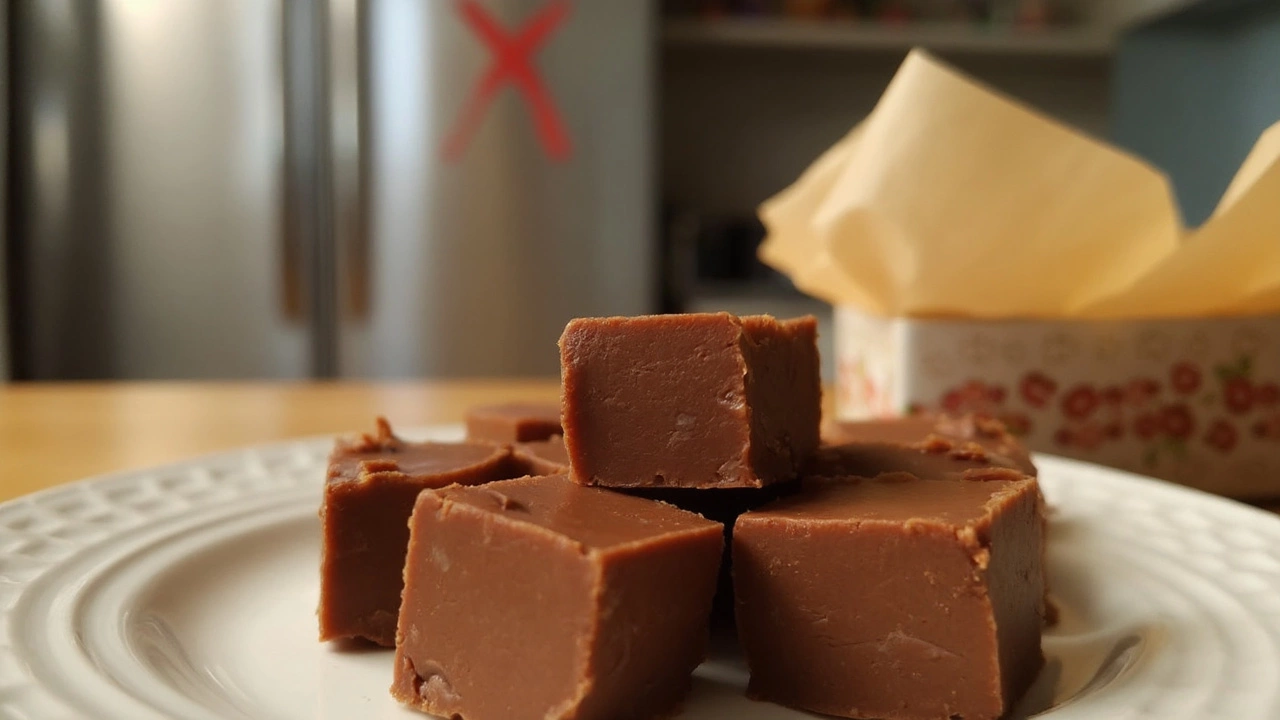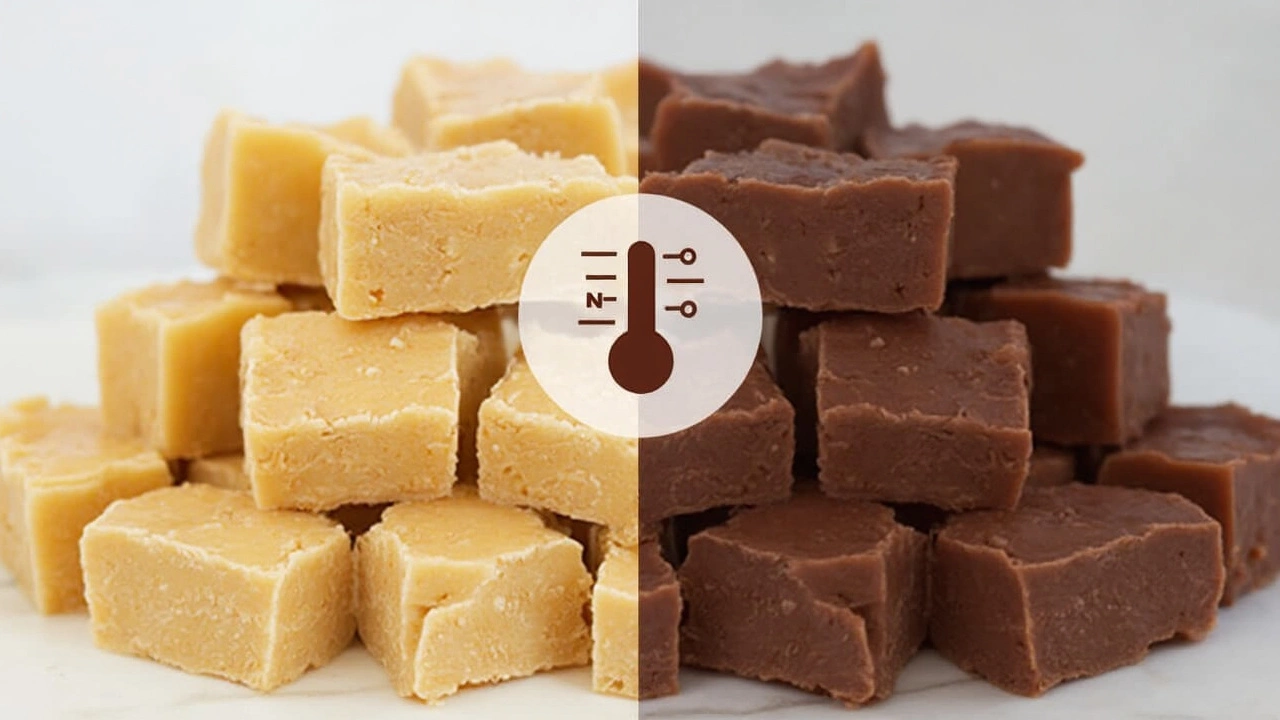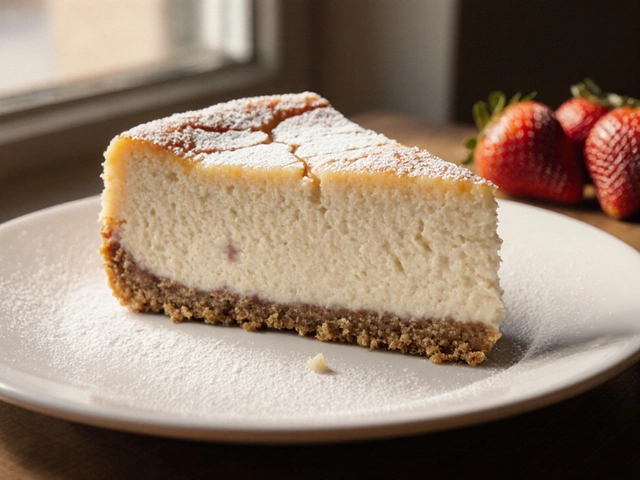
So you made a gorgeous batch of fudge—maybe you went classic chocolate, maybe you got fancy with peanut butter or maple. The thing is, you want that fudge to taste just as dreamy tomorrow as it does today. Your first instinct might be to pop it in the fridge, like you would with cake or leftovers. Resist that urge! Putting fudge in the fridge seems smart, but it actually leads to a quick downfall: rock-hard, grainy, dull-tasting fudge. Nobody wants that.
Here’s the lowdown: Cold air in the fridge dries out fudge fast and can make the sugar crystals clump together. That’s why next-day fridge fudge bites back with a gritty texture. Plus, fudge loves to soak up any weird fridge smells, like onions or leftover takeout. If you ever had fudge that tasted oddly like last night’s pizza, you know the struggle is real.
- What Happens to Fudge in the Fridge?
- Why Texture Matters: Science Behind Perfect Fudge
- How to Store Fudge the Right Way
- Quick Tips for Fresh and Tasty Fudge
What Happens to Fudge in the Fridge?
When you put fudge in the fridge, the cold air pulls out moisture, so what starts out creamy and smooth turns dry and crumbly. Fridge temperatures also mess with the sugar structure. Sugar crystals multiply and get bigger, which explains why fudge goes from melt-in-your-mouth to oddly gritty pretty quickly.
There's more: fudge soaks up odors like a sponge. Got onions, garlic, or even broccoli sitting close by? Your fudge will start tasting—or at least smelling—weird. Fudge is also usually made with rich dairy. At fridge temps, the butter can separate out, making the block look greasy on top but weirdly stiff inside.
- Texture: becomes hard, crumbly, or grainy after just a day or two in the fridge.
- Flavor: absorbs nearby smells and loses that fresh, chocolatey punch.
- Appearance: may develop beads of moisture on the surface, or go from glossy to dull.
If you’re curious about how quickly fudge can change in the fridge versus at room temp, here’s a little rundown:
| Storage Type | Texture After 2 Days | Flavor Quality |
|---|---|---|
| Room Temperature (in airtight container) | Smooth, soft | Rich, unchanged |
| Refrigerator (uncovered) | Hard, grainy | Dull, picks up other odors |
| Refrigerator (in container) | Dry edges, some graininess | Still at risk for picking up fridge smells |
People often believe colder means fresher, but fudge behaves differently from cakes or cookies. A quick stay in the fridge to set the fudge is fine, but if you leave it there for long storage, you’re pretty much guaranteeing it won’t be as tasty or nice to bite into later.
Why Texture Matters: Science Behind Perfect Fudge
Everyone talks about the creamy texture of fudge, but what does that really mean? Good fudge should feel soft and smooth on your tongue—not gritty, not crumbly, and not hard like a forgotten Halloween candy. Getting there isn’t about luck; it’s all about the way the sugar behaves while your batch sets.
Here’s the thing: when you cook fudge, you’re dissolving sugar in butter and milk (or cream) and then letting it cool just right. If the sugar cools too fast or you mess with it while it’s setting, the sugar crystals get too big, leaving your fudge sandy instead of silky. That’s why temperature and timing matter here more than with many other sweets.
Refrigerators mess with this balance. The cold pushes moisture out and forces the sugar to crystallize in bigger chunks. Also, fats from the butter or condensed milk inside your fudge harden up, leaving you with a brittle bite.
Most people don’t realize fudge is at its best at cool room temps. The magic texture comes from a slow cooling process, usually in a steady spot away from heat or drafts. If you live somewhere super hot or humid, wrap your fudge well and keep it in the coolest area of your kitchen—just skip the fridge unless you want to risk texture trouble.
Bottom line? If you care about that dreamy, melt-in-your-mouth feel, how you store your fudge makes all the difference.

How to Store Fudge the Right Way
You don’t need any special gadgets to keep fudge soft, creamy, and delicious for days. Room temperature is actually your fudge’s happy place. The trick is to protect it from air, moisture, and heat—and skip the fridge completely.
Here’s your simple plan for fudge storage that really works:
- Let your fudge cool completely before storing. If it’s still warm, condensation forms and messes up the texture.
- Wrap fudge tightly in wax paper or baking parchment. This keeps things clean and prevents drying out.
- Place the wrapped fudge in an airtight container. Stacking pieces with parchment between layers stops them from sticking together.
- Keep the container in a cool, dry cupboard or pantry. Aim for somewhere between 65°F and 75°F (18°C-24°C). No direct sunlight or heater vents.
Homemade fudge storage life is actually impressive. If you follow the steps above, most fudge stays perfect for one to two weeks. If you want to hang on to it even longer—think holiday gift batches—you can freeze fudge. Just wrap firmly, tuck in a zip-top freezer bag, remove as much air as possible, and pop it in the freezer for up to three months. When you’re ready for a treat, thaw at room temp (never in the fridge!).
A quick look at shelf-life options:
| Storage Method | How Long It Lasts |
|---|---|
| Room Temperature (Airtight) | 1-2 weeks |
| Freezer (Tightly Wrapped) | Up to 3 months |
Treat your fudge kindly and skip the fridge. The payoff is always better texture, richer flavor, and zero food-waste guilt.
Quick Tips for Fresh and Tasty Fudge
You want your fudge to stay smooth and delicious, right? Keeping it fresh is pretty simple once you know what works and what just ruins the party. Here’s how to save your fudge from drying out or picking up off flavors.
- Wrap it tight: Use plastic wrap or wax paper and press it right up against the surface of your fudge, no air gaps. Then pop it in an airtight container. This keeps moisture in and blocks weird smells out.
- Room temp is your friend: Fudge actually likes normal room temperature best, around 65-72°F (18-22°C). Don’t let it sit in direct sun or on a hot counter, though—heat is almost as bad as cold for changing the texture.
- Cut as you go: Only cut what you need. Leaving the rest in a block helps keep the inside soft and yummy.
- Short trips in the fridge are okay—sometimes: If your house is super hot or you’re worried about melting, you can chill fudge for a bit, but wrap it tightly and take it out about 30 minutes before serving. Cold fudge straight from the fridge is just sad to bite into.
- Freeze for the long haul: Got a ton of fudge left and don’t want it to go to waste? Wrap it like a pro, pop it into a freezer bag, and stash it in the freezer. Let it thaw fully at room temp when you’re ready to enjoy it again. Fudge freezes surprisingly well for up to 3 months.
Stick to these storage moves and you’ll never have to deal with dry, crumbly, or flavorless fudge again. It’s all about keeping things airtight and cool—never cold—and making sure your fudge stays the treat it was meant to be.





